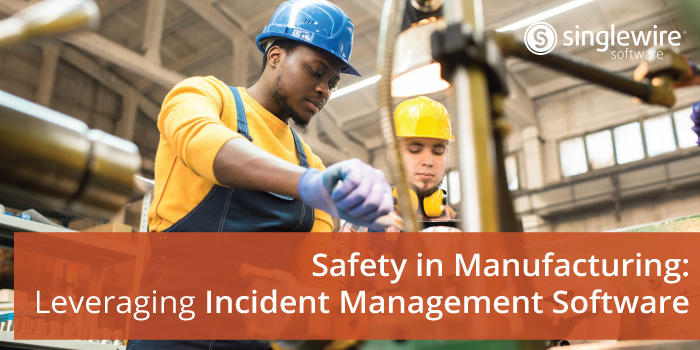Maximizing Safety in Manufacturing
Safety in manufacturing is of the utmost importance. With complex environments and loud machinery involved, it is crucial for manufacturers to have incident management systems in place to protect employees and assets. According to the U.S. Bureau of Labor Statistics, private industry employers reported 2.8 million nonfatal workplace injuries and illnesses in 2022, marking a 7.5 percent increase from 2021. These statistics underscore the urgent need for comprehensive safety measures in manufacturing facilities to protect employees and effectively respond to emergencies.
Detecting Safety Issues in Manufacturing
Detecting safety issues in manufacturing is the crucial initial step in ensuring a secure work environment. Leveraging technology like sensors, panic buttons, and AI-powered video surveillance systems can help stay ahead of potential issues to enhance safety in manufacturing.
Sensors placed strategically throughout the manufacturing floor can monitor various parameters such as temperature, pressure, air quality, and equipment performance in real time. Anomalies in these parameters can indicate potential safety hazards, allowing for proactive intervention before accidents occur.
Panic buttons provide employees with a quick and easy way to alert supervisors or safety personnel should they witness or become part of an emergency. Officials can place these buttons at key locations across the facility, provide wearable devices, or encourage employees to download panic button apps to ensure rapid response to critical situations.
AI-powered video surveillance systems footage and identify potential safety risks. These systems can detect slipping hazards, employees that have fallen, unauthorized access, and weapons, enabling swift intervention to prevent accidents.
Notifying the Right People
Once a safety issue is detected, it is crucial to notify the right people promptly to uphold safety in manufacturing. Effective notification systems should offer a variety of communication channels, including targeted messages delivered as text, audio, and visual alerts.
Officials can send targeted messages to specific individuals or groups based on their roles and responsibilities within the organization. This ensures that people can inform the relevant personnel promptly, allowing for timely response to safety incidents.
Officials can also send text and audio alerts to employees’ mobile devices or integrated communication systems within the manufacturing facility. These alerts provide immediate notification of safety issues, enabling employees to take appropriate action to mitigate risks.
Visual alerts, such as flashing lights or digital signage, can supplement text and audio notifications, ensuring that officials can convey safety messages clearly and effectively to all employees, even in noisy or busy environments.
Managing Safety Issues and Deploying an Effective Response
Once an issue is detected and relevant personnel are notified, it is essential to manage the incident effectively to minimize its impact on safety. Incident management software plays a critical role in facilitating this process by providing real-time insights, mapping capabilities, and virtual collaboration tools.
Mapping features within incident management software allow safety personnel to pinpoint the location of the incident accurately. This information is crucial for deploying resources efficiently and coordinating response efforts.
Virtual collaboration tools enable remote teams to communicate and collaborate effectively during safety incidents. Whether it is through video conferencing, instant messaging, or shared dashboards, these tools facilitate seamless communication and decision-making, ensuring a coordinated response to emergencies.
Real-time insights provided by incident management software allow safety personnel to monitor the status of ongoing incidents and track response efforts This information enables continuous assessment and adjustment of safety protocols, ensuring that the situation remains under control until normal operations can resume.
Safety in manufacturing is a top priority for organizations seeking to protect their employees and assets. By leveraging incident management software and integrated technology, manufacturers can enhance their ability to detect safety issues, notify the right people, and deploy an effective response to emergencies. With comprehensive safety measures in place, manufacturing facilities can create a secure work environment where employees can thrive safely. To learn more about how to enhance safety in manufacturing with the right tools, visit our manufacturing page.
